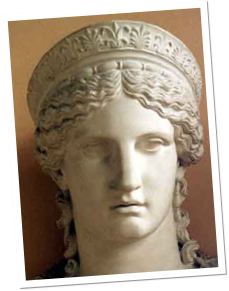 |
| Photo Tufts University |
It’s Easter time and the ubiquitous Easter Lily is every where. Did you ever wonder why we purchase these flowers at Easter time? Historically speaking Easter lilies don’t have much to do with the Easter holiday. They are not native to the Holy Land. In Biblical lore, however, the lily is mentioned numerous times. One of the most famous Biblical references is in the Sermon on the Mount:
Consider the lilies of the field, how they grow; they neither toil nor spin, yet I tell you, even Solomon in all his glory was not arrayed like one of these. (Matt. 6:28-29). Often called the "white-robed apostles of hope," lilies were found growing in the Garden of Gethsemane after Christ's agony. Tradition has it that the beautiful white lilies sprung up where drops of Christ's sweat fell to the ground in his final hours of sorrow and deep distress.
Lilies have also played significant roles in tales concerning the sacrament of motherhood. Ancient fables tell us the lily sprang from the milk of Hera, the mythological Queen of Heaven. It has been associated with the Virgin Mary. In early paintings, the Angel Gabriel is pictured extending to the Virgin Mary a branch of pure white lilies, announcing that she is to be the mother of the Christ Child. In other paintings, saints are pictured bringing vases full of white lilies to Mary and the infant Jesus.
Tradition has it that when Eve left the Garden of Eden she shed real tears of repentance, and from those remorseful tears sprung up lilies.
 |
| Old Lily Farm |
The lily (Lilium longiflorum) that we refer to as the Easter Lily, is native to the Ryukyu Islands of southern Japan. Our use began when a World War I soldier, Louis Houghton, brought a suitcase full of hybrid lily bulbs to the South coast of Oregon in 1919. Houghton freely distributed bulbs to his horticultural friends and neighbors. During WW II, the Japanese source of bulbs was abruptly cut off. As a result, the value of lily bulbs sky-rocketed and many who were growing the lilies as a hobby decided to go into business. The Easter Lily bulbs at that time were called "White Gold", and growers everywhere attempted to cash in on the crop. By 1945 , there were about 1,200 growers producing bulbs up and down the Pacific coast, from Vancouver, Canada to Long Beach, California. Over the years, the total number of Easter Lily bulb producers dwindled down to just ten farms in a small, isolated coastal region straddling the Oregon-California border. This region, called the Easter Lily Capital of the World, produces nearly all of the bulbs for the blooming potted Easter Lily market. (
Easter Lily Research Foundation.)
 |
| Easter Lily Bulb Cornell University |
If you have received an Easter Lily, here are some tips for caring for them:
Indoors:
Choose a sunny or bright location so it will receive plenty of light during the day. Keep away from heat sources (like a heat register) since it prefers being cool at night.
Water well each day.
Once it blooms and the leaves begin to yellow, keep watering until ready to transplant outdoors (allow the leaves to die naturally before pruning them).
Outside:
When all danger of frost has passed in the Spring and the soil can be worked, plant the bulb 6 to 8 inches deep in the soil. Choose a location where it will receive lots of sun and make sure the soil is well-draining. Top the soil with about an inch or two of mulch to help keep the roots cool during the hot summer.
The Front Range’s biggest challenge for lilies is our clay soil and dry winters.
Lilies bloom in late May and June. They are “forced” for Easter bloom. It may take the plant two years to bloom.
Lilies are very poisonous to cats so make sure to keep them out of reach of your favorite feline.



